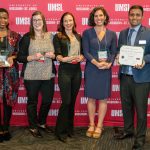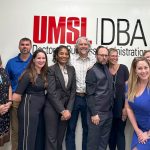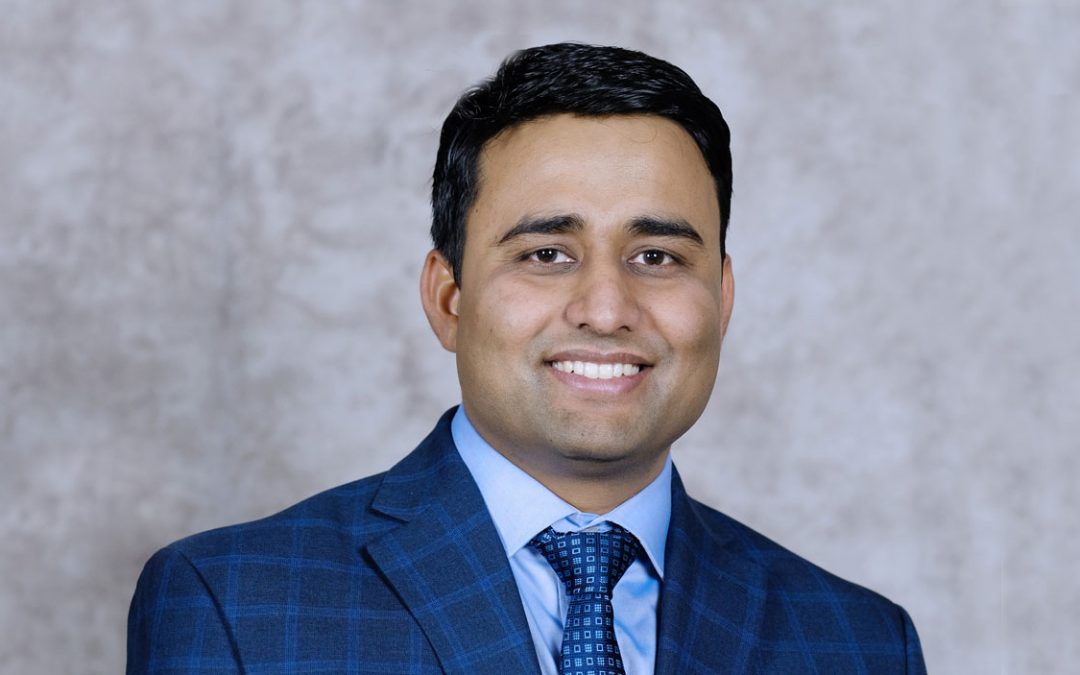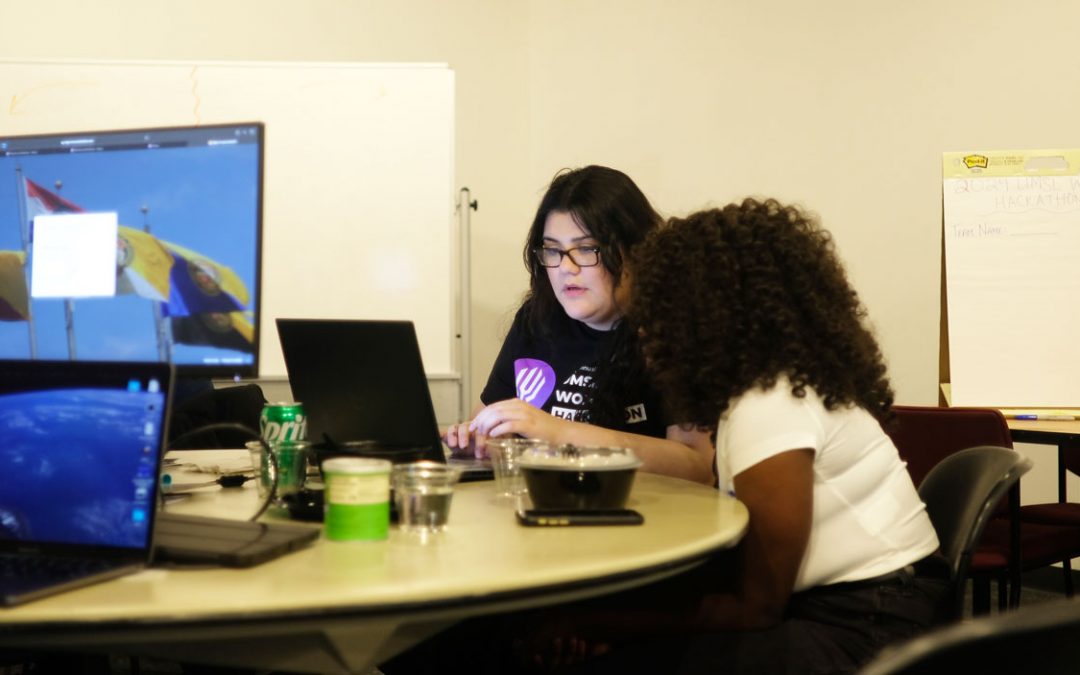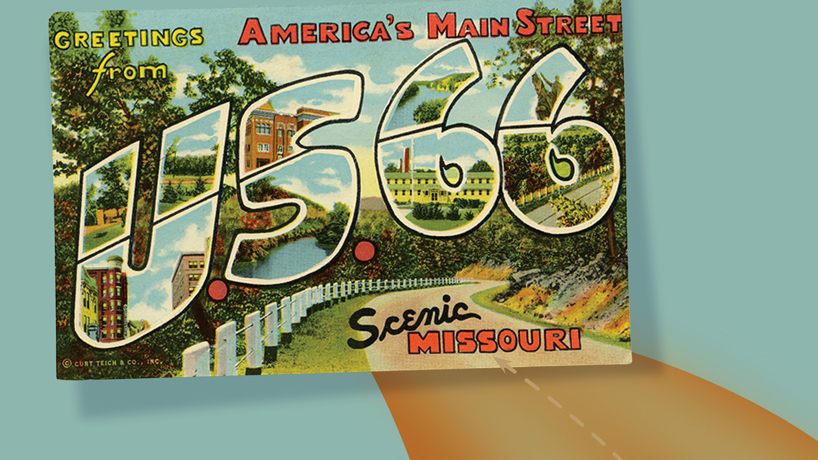
Building on the Missouri History Museum’s “Route 66: Main Street Through St. Louis” exhibit, this year’s James Neal Primm Lecture in History is set for 7 p.m. Sept. 12. Featuring several panelists, the discussion aims to move beyond Route 66’s nostalgic associations. (Postcard image courtesy of the Missouri History Museum. Design by Wendy Allison.)
It’s only been open for a couple months, but already the Missouri History Museum’s exhibit on Route 66 has attracted nearly 100,000 people from near and far. Andrew Hurley, a University of Missouri–St. Louis history professor, is one of them, serving as an informal tour guide on this particular visit.
His fascination with the eye-catching material culture on display is obvious – the neon signs, old gas pumps and diner memorabilia all speaking volumes about aspects of American culture Hurley has studied. What he’s most drawn to, though, are the real-life tales tucked alongside the visually stunning, three-dimensional elements.
“If you pick up that telephone, you’ll hear individual reminiscences of Route 66,” the UMSL faculty member explains. “Scattered around are people’s personal stories, oral histories. And to me those rank right up there with the splashy items as very revealing – and really get to the real story, as opposed to the lore. And it’s a lore that’s very much steeped in a nostalgia of better days and simpler times, but that gets complicated once you start listening to the individual stories.”
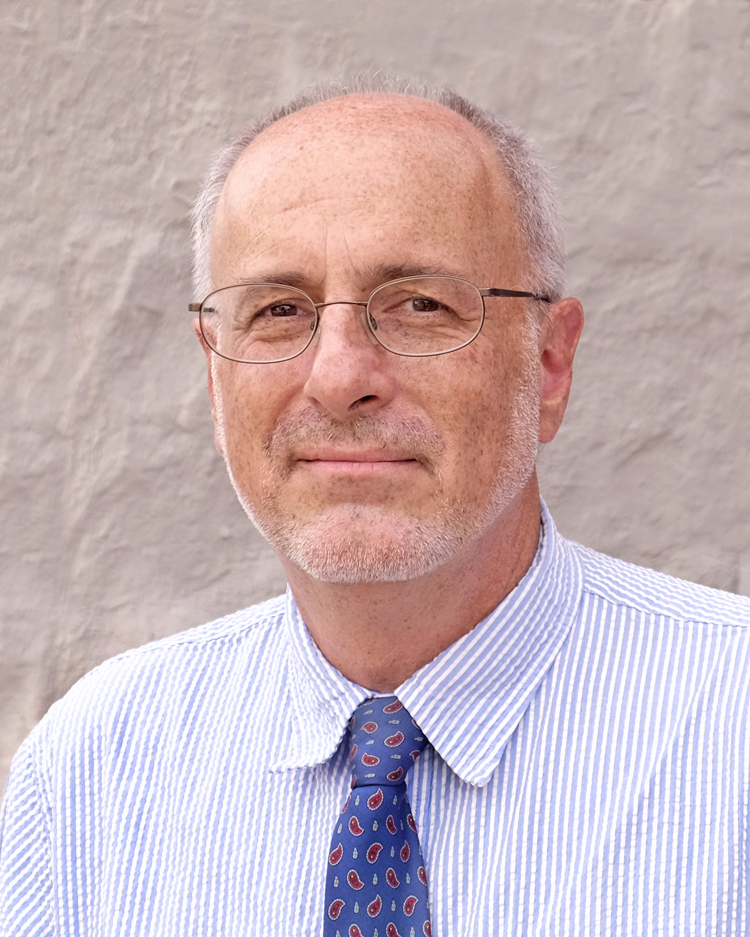
Andrew Hurley, director of graduate studies in history at UMSL, will moderate the Sept. 12 discussion. (Photo by August Jennewein)
That deeper understanding will be a focus of “Remembering Route 66,” a panel discussion set for 7 p.m. Sept. 12 in the museum’s Lee Auditorium. Sponsored by UMSL, the free event is this year’s James Neal Primm Lecture in History and aims to dig beyond the nostalgia that surrounds the Mother Road.
“We usually just have one speaker, but we decided to do something a little different and present multiple perspectives,” Hurley says. “There’s a tendency, when you look back on Route 66, to think of it as kind of a uniform experience for people who traveled it, but it wasn’t. It meant very different things for different parts of the population. And so we wanted to really emphasize that in the Primm lecture.”
To that end, Hurley will serve as moderator of a discussion that approaches Route 66 from all different angles. The panelists will include Susan Sessions Rugh, author of “Are We There Yet? The Golden Age of American Family Vacations,” Emerson R. Vallo, who hails from the Pueblo of Acoma and is director of Acoma’s Sky City Cultural Centre and Haak’u Museum, and St. Louisan John A. Wright, author of “Discovering African American St. Louis.”
The hope is that eventgoers will take away a sense that the history of Route 66 is far from frivolous.
“We can learn a lot about the past by interrogating the prosaic,” Hurley says. “Examining, probing everyday life and the decisions that people made when they started a business, when they traveled, decided where to stop – Route 66 is where social relations were made and remade.”
It’s also a path marked by the troubling realities of segregation, cultural appropriation and other issues, he adds.
“There’s this association with the road with freedom and mobility – that didn’t apply when you were African American. You were going into towns and parts of the country where you didn’t know the lay of the land … We don’t think of Route 66 as a dangerous place, but it could be if you didn’t know what kind of reception you would be getting.”
Stretching from Chicago to Los Angeles at a time before the interstate, “America’s Main Street” passed through Native American territory as well as large urban areas like St. Louis. And as much as it’s associated with a mom-and-pop, small-town era, the heyday of Route 66 was also very much about commercialism and salesmanship.
“These were businesses. They wanted your money, and they were competing with each other and wanted to find ways to stand out from other businesses,” Hurley says. “A lot of times you go to the outskirts of the town, you have a line of 20, 30 motels competing with each other – that’s one of the reasons why the architecture of the road is so spectacular, because the buildings, the architecture were advertisements for the business. That’s what beckoned people to come in. It wasn’t about reputation – it was the way they looked from the car.
“But another way was to try to capture the spirit or the essence of the geographical region, so as you went to the Southwest there were a lot of businesses playing on that American Indian, Wild West past, and using stereotypes. I hope we’ll be able to talk about that too in the discussion.”
There will be time for questions from the audience, Hurley notes. For more information about the Sept. 12 event, click here.



